The robots are here!!
A cylindrical robot rolls into a treatment room to allow healthcare workers to remotely take temperatures and measure blood pressure and oxygen saturation from patients hooked up to a ventilator.
Another robot that looks like a pair of large fluorescent lights rotated vertically travels throughout a hospital disinfecting with ultraviolet light.
These are just a few of the robots which are being used during the COVID-19 pandemic, from health care in and out of hospitals, automation of testing, supporting public safety and public works, to continuing daily work and life.
Here's a look at how Artificial Intelligence is being used in this war against COVID-19.
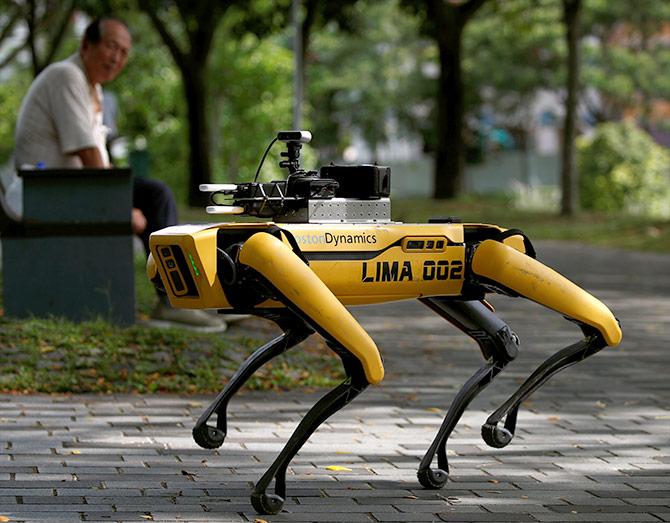
A four-legged robot dog called SPOT patrols a park as it undergoes testing to be deployed as a safe distancing ambassador, following the coronavirus disease outbreak in Singapore. SPOT is fitted with cameras that will be used to estimate the number of visitors to the park. Using the robot will reduce the need for staff to patrol the grounds, which will in turn lower the risk of exposure to the virus. Photograph: / Edgar Su/Reuters
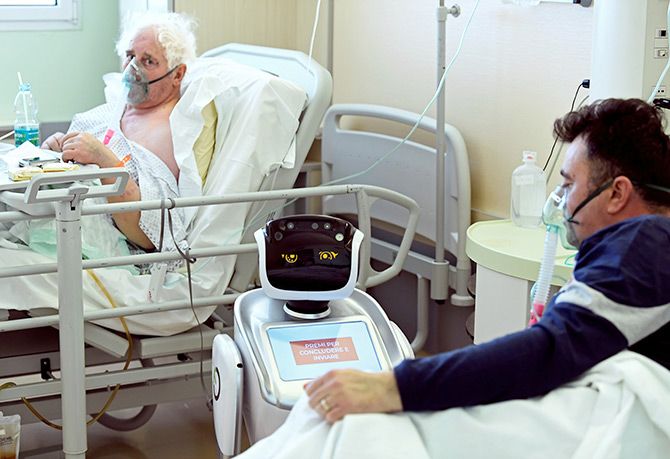
A robot helping medical teams treat patients suffering from the coronavirus disease is pictured at a patients' room, in the Circolo hospital, in Varese, Italy. The hospital has six such robots to care for coronavirus patients. The child-size robots with large blinking eyes are wheeled into rooms and left by a patient’s bedside so doctors can look after others who are in more serious conditions. They monitor parameters from equipment in the room, relaying them to hospital staff. The robots have touch-screen faces that allow patients to record messages and send them to doctors. Most importantly, the high-tech teammates allow the hospital to limit the amount of direct contact doctors and nurses have with patients, thus reducing the risk of infection. Photograph: Flavio Lo Scalzo/Reuters
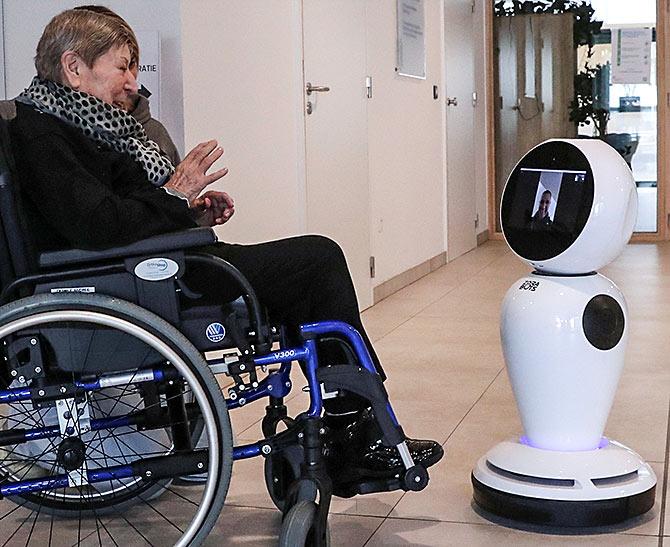
Belgian Andree Desmaelle, 76 virtually communicates with someone thanks to a robot made available by Belgian company ZoraBots for elderly people’s homes for free so that they can stay in touch with their loved ones despite the ban on visits to fight against the spread of COVID-19, in Ostend, Belgium. Photograph: Yves Herman/Reuters
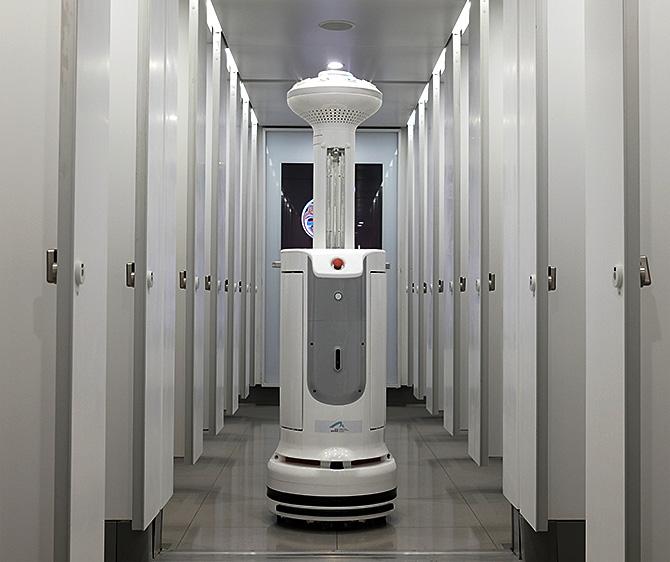
An Intelligent Sterilization Robot, produced by TMiRob of China, uses UV light to sanitise, at a toilet at the Hong Kong International Airport, in Hong Kong. The white robot has a hydrogen peroxide sprayer on its "head" and nine ultraviolet lamps in its "belly," and can perform multiple forms of disinfection in environments where humans and machines coexist, said the manufacturer of the robot. Photograph: / Tyrone Siu/Reuters
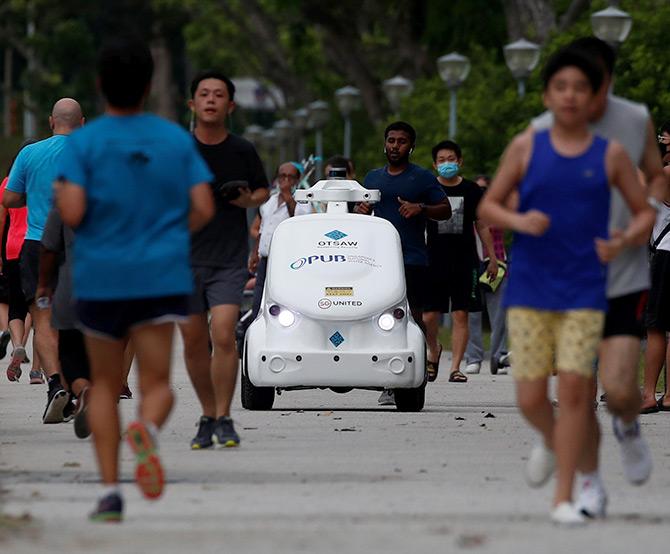
Public Utilities Board’s O-R3 social distancing ambassador robot broadcasts reminders at joggers to keep a safe distance in Singapore. The remotely-controlled machine has batteries which allow it to travel up to 1 kilometre, but this is being increased to 4 km. Photograph: Edgar Su/Reuters
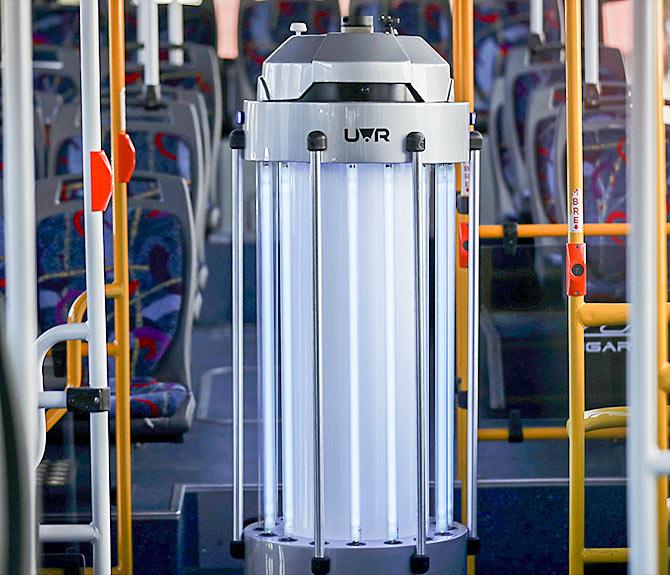
A robot made by Argentine company UV-Robotics uses UV light to detect germs and sanitise, in a bus, in Buenos Aires, Argentina. Photograph: Agustin Marcarian/Reuters
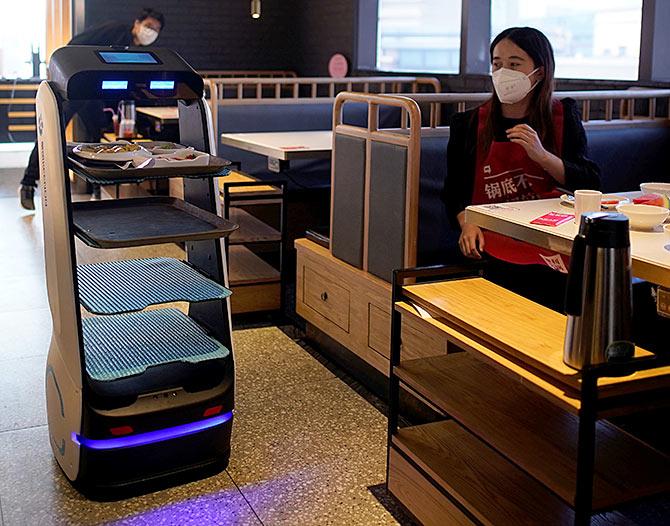
A robot transports food to serve to diners at a restaurant, following an outbreak of the novel coronavirus disease in Shanghai, China. Photograph: Aly Song/Reuters
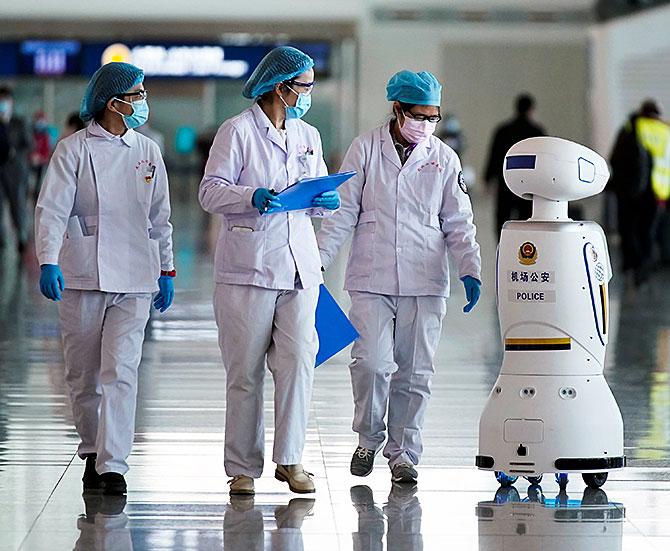
Medical workers walk by a police robot at the Wuhan Tianhe International Airport after travel restrictions to leave Wuhan, the capital of Hubei province and China's epicentre of the novel coronavirus disease outbreak were lifted. Photograph: Aly Song/Reuters
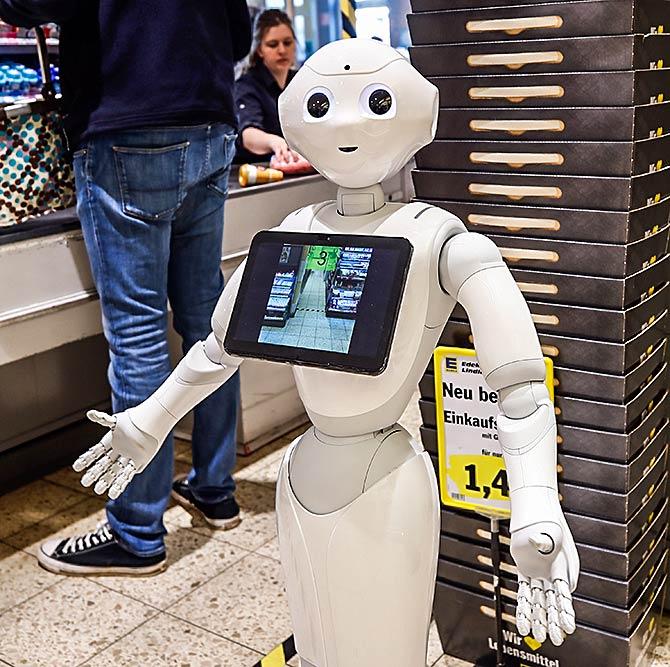
Humanoid robot Prepper is standing at the checkout counter of the Edeka grocery store to explain protective measures and to promote solidarity with each other, as the spread of the coronavirus disease continues, in Lindlar, Germany. Photograph: Wolfgang Rattay/Reuters
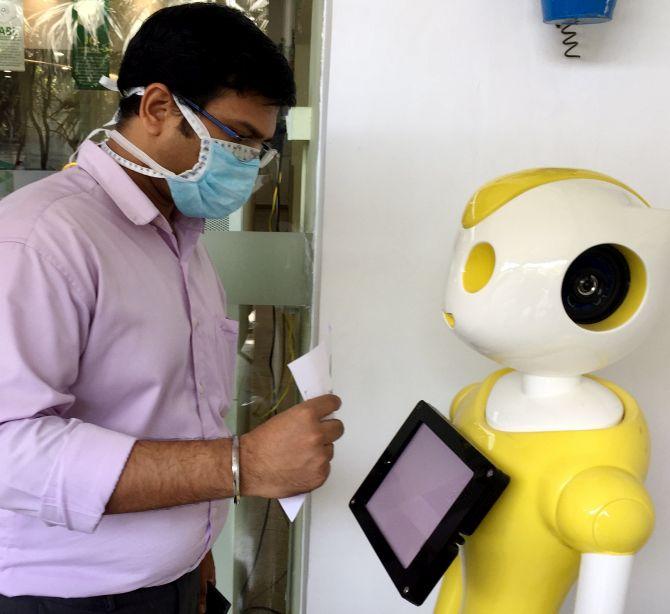
A robot at a Fortis hospital in Bengaluru. Mitra and Mitri, two robots, screen each and every visitor including doctors, nurses, medical and non-medical staff entering the hospital at Bannerghatta Road. The robot interacts using facial and speech recognition contextual help and autonomous navigation and screens the visitor for symptoms for COVID-19 such as fever, cough and cold. Photograph: ANI Photo










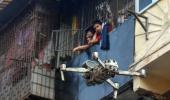




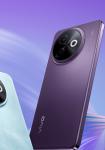


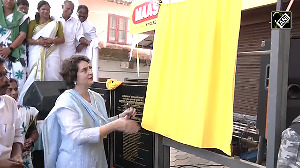
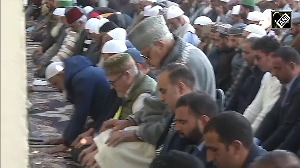

 © 2025
© 2025